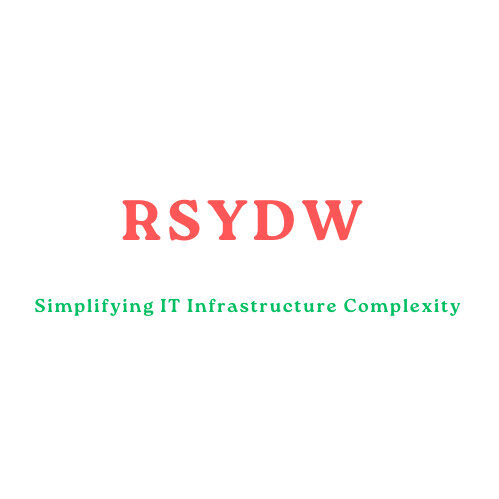|
Getting your Trinity Audio player ready...
|
In this article, we will discuss how to install ansible on linux and start your journey to automation. Ansible is the best IT automation tool.
It is almost 4 years if I am not wrong Ansible gets delivered via Yum Repository in form of an on-demand repository. Red Hat provides many software packages in form of different categories of repositories.
You can find what all repo is enabled in your environment using the yum repolist command. You can understand by the below example.
# yum repolist
|
Repo id |
Repo Name |
Status |
|
distro/7.5-8.el7/x86_64 |
RedHat Linux Distribution |
5,099 |
|
kernel/7.5-8.el7/x86_64 |
Updated Kernel Software |
12 |
|
ondemand/7.5-8.el7/x86_64 |
On-Demand Requested Software |
1,887 |
|
optional/7.5-8.el7/x86_64 |
On-Demand Requested Software |
5,073 |
|
security/7.5-8.el7/x86_64 |
Linux Security Updates |
5,452 |
|
updates/7.5-8.el7/x86_64 |
Linux Software Updates |
5,452 |
Before we reach installation let us understand few basic things related to Ansible. This is for beginners who are just starting with Ansible.
Table of Contents
What is Ansible?
Ansible is an open-source information technology automation platform from Red Hat. Ansible uses human-readable YAML templates to allow users to automate repetitive tasks, without learning any advanced coding language.
Ansible replaces shell script-based automation with an automated and repeatable process. Ansible pushes application code, programs, and IT infrastructure setup instructions via modules to managed nodes, whether physical servers, virtual machines, or even cloud instances.
It is really handy in many cases like
- Orchestration
- Configuration Management
- Used Cases
- Provisioning
- Application Deployments
- Rolling Upgrades
- Security and Compliance
Why Ansible Was Designed?
The main goal why Ansible was designed is as below for your reference.
- Minimal in Nature: Systems management should not impose additional dependencies on the environment.
- Consistent: With Ansible one should be able to create consistent environments.
- Secure: Ansible does not deploy agents to nodes. Only OpenSSH and Python are required on the managed nodes.
- Highly Reliable: When carefully written, an Ansible playbook can be idempotent, in order to prevent unexpected side-effects on the managed systems. It should be noted, however, that it is entirely possible to have a poorly written playbook that is not idempotent.
- Minimal Learning Required: Playbooks use descriptive language based on YAML and Jinja templates.
Important Ansible Terminology
Ansible Controller Machine
The controller machine is the machine where Ansible is installed and it is responsible to run automation within the organization. You can manage your IT infrastructure from Control Machine. You may have multiple control machines in your environment.
Ansible Inventory
Ansible inventory is the initialization file that has details of the servers you are expected to manage . In simple words list of servers to be managed is the inventory. contains information about the Servers you are managing.
Ansible Playbook
This is the main file where automation is defined through tasks using the YAML format. For creating automation playbooks are created.
Ansible Task
A block of instructions to fulfill a specific task for example like restarting any specific services on all nodes in inventory. You can include many tasks in an ansible playbook as per your requirement.
Ansible Modules
Ansible has a number of built-in modules to achieve specific goals and even you can create your own module.
Ansible Role
The role consists of pre-defined methods of organizing playbooks and even other files to facilitate sharing and they are reusable.
Ansible Play
In simple words, you can say the execution of a playbook is called a play. It adopts the starts to finish approach and executes them sequentially.
Main Advantages of Ansible
It’s Simple
Ansible uses general syntax written in YAML called playbooks YAML is a human-readable data serialization language. It is absolutely simple therefore no special coding skills are required.
Those who do not know what is Ansible in your company can very easily read an ansible playbook and easily understand what is happening. It always executes tasks in order. And most important is that it is really easy to install. Let’s deep dive into how to install ansible on rhel7.
It’s Agentless
IT does not need any agents needs to be installed on the servers which you want to manage. Ansible is agentless means there are no agents or additional firewall ports that need to install on the client systems or hosts which you want to automate.
You do not have to set up a management infrastructure that includes managing your entire systems, network, and storage. It reduces the amount of effort required for your team to start automating immediately.
It is Powerful & very Flexible
Ansible has powerful features that may enable you to model even the most complex IT workflows.
Ansible supports hundreds of inbuild modules to manage. Ansible’s capabilities allow you to orchestrate the entire application environment regardless of where it is deployed.
It’s very Efficient
No extra software on your servers means more resources for your applications Also since Ansible modules work via JSON, Ansible is extensible with modules written in a programming language you already know Ansible introduces modules as basic building blocks for your software So, you can even customize it as per your needs.
For example: If you have an existing message sending module that sends messages in plain text, and you want to send images too, you can add image sending features on top of it.

Why Ansible?
The main reasons to choose the only ansible as below.
- It is a free and open-source software tool.
- It is agentless so no need for agent installation and management.
- Python/YAML-based.
- Highly Flexible.
- Configuration Management System
- A large number of inbuild ready-to-use modules.
- Custom Modules can be incorporated
- Rollback is possible in case of error.
- Simple and Human Readable.
- It documents itself
So now we have seen enough about ansible. Ansible can be a turning and rewarding point in your automation journey. So let us come back to our main topic how to install ansible on rhel7. Check for more details on how ansible works?
We have already seen that you have already set up all RedHat linux repo either on an organizational basis or directly using Redhat yum online. The first thing to check the availability of an ansible package in your yum repository before installing it.
How to Check Ansible Package Availability in RHEL7
# yum --enablerepo=* list ansible* Available Packages ansible.noarch 2.4.2.0-2.el7 ondemand ansible-doc.noarch 2.4.2.0-2.el7 ondemand
The above command will display the availability of an ansible package in your yum repo. Please refer to the output above you can easily found what version of ansible is available.
How to Install Ansible On RHEL7
Now it is my turn to install it. Please refer to the below example once it will ask you have to just enter y and it gets installed with dependencies as well.
# yum --enablerepo=* install ansible* ============================================================ Package Arch Version Repository Size Installing: ansible noarch 2.4.2.0-2.el7 ondemand 7.6 M ansible-doc noarch 2.4.2.0-2.el7 ondemand 763 k Installing for dependencies: python-babel noarch 0.9.6-8.el7 distro 1.4 M python-httplib2 noarch 0.9.2-1.el7 ondemand 115 k python-jinja2 noarch 2.7.2-2.el7cp ondemand 516 k python-markupsafe x86_64 0.11-10.el7 distro 25 k python-passlib noarch 1.6.5-2.el7 ondemand 488 k python2-jmespath noarch 0.9.0-el7ae ondemand 39 k sshpass x86_64 1.06-.el7 ondemand 21 k Transaction Summary ============================================================ Install 2 Packages (+7 Dependent packages) Total download size: 11 M Installed size: 52 M Is this ok [y/d/N]: y Installed: ansible.noarch 0:2.4.2.0-2.el7 ansible-doc.noarch 0:2.4.2.0-2.el7 Dependency Installed: python-babel.noarch 0:0.9.6-8.el7 python-httplib2.noarch 0:0.9.2-1.el7 python-jinja2.noarch 0:2.7.2-2.el7cp python-markupsafe.x86_64 0:0.11-10.el7 python-passlib.noarch 0:1.6.5-2.el7 python2-jmespath.noarch 0:0.9.0-4.el7ae sshpass.x86_64 0:1.06-2.el7 #
You might have seen above that all the dependencies also automatically installed. That`s it now we have successfully installed ansible on rhel7.
How to Check Ansible Version?
You can check the ansible version in linux using the ansible –version command. Please find the below example for reference purposes.
# ansible --version ansible 2.4.2.0 config file = /etc/ansible/ansible.cfg configured module search path = [u'/home/user/.ansible/plugins/modules', u'/usr/share/ ansible/plugins/modules'] ansible python module location = /usr/lib/python2.7/site-packages/ansible executable location = /usr/bin/ansible python version = 2.7.5 (default, May 31 2018, 09:41:32) [GCC 4.8.5 20150623 (Red Hat 4.8.5-28)] #
Alternatively, you can use the rpm command in linux also to check the ansible version. These two are the easiest method for how to check ansible in redhat enterprise linux.
# rpm –qa |grep ansible
ansible.noarch 0:2.4.2.0-2.el7
ansible-doc.noarch 0:2.4.2.0-2.el7
#
Conclusion
That`s it about how to install ansible on linux. These two are the easiest method for how to check ansible in redhat enterprise linux.
Please share in form of comments if you are using any other method either for installing ansible for linux or how to find ansible version in linux.
Another resource, if you are interested to learn more, is as below.
Why Find Command In Linux Had Been So Popular Till Now?
40 Important Basic Linux Commands For Beginners With Examples
How to Remove Veritas File System




